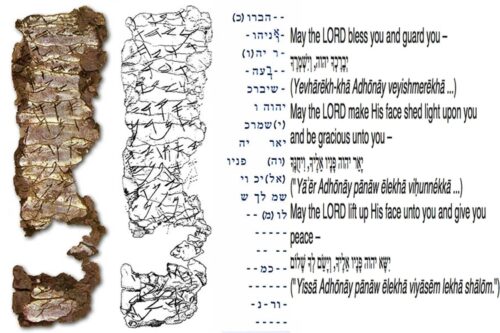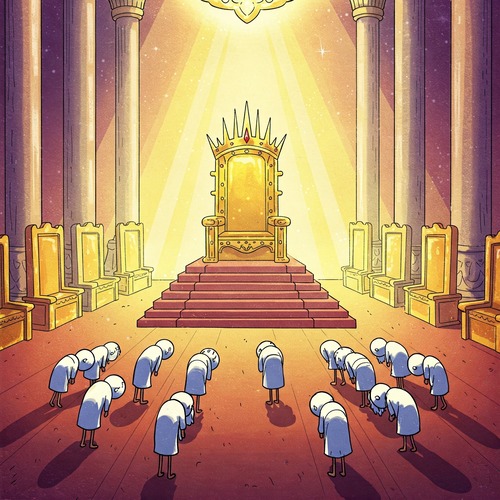The Great Resurrection: What Will Glorified Bodies Be Like?
The biblical doctrine of bodily resurrection continues to raise eyebrows. Christians themselves are often fuzzy on the details, preferring to entertain vague notions of “going to heaven” over the concrete details. Yet this doctrine is at the very heart of Christian hope—we believe not simply that our souls will float away to some ethereal paradise, but that our bodies will be raised, transformed, glorified.
“The final resurrection,” Calvin reminds us, “is the ultimate miracle, exceeding all others in its wonder.” But what exactly will these resurrection bodies be like? What does Scripture actually teach about our future embodied existence? Come, explore this fascinating, hope-filled doctrine with us.
BIBLICAL FOUNDATION FOR THE RESURRECTION
The cornerstone of Christian faith isn’t merely an empty tomb but a risen Saviour with a transformed yet physical body. In 1 Corinthians 15, Paul calls Christ the “firstfruits” of the resurrection—a powerful agricultural metaphor indicating that our resurrection will follow His as surely as the harvest follows its first ripened produce.
This promise echoes throughout Scripture. Paul assures the Romans the same Spirit who raised Jesus will give life to our mortal bodies. To the Philippians, he declares Christ will transform our lowly bodies to be like His glorious one. These aren’t metaphors but concrete promises.
We find glimpses of this hope in the Old Testament too. Job, amid his suffering, confidently proclaims he will see God in his flesh. Daniel foresees a day when those sleeping in dust will awake to everlasting life, shining like stars.
THE NATURE OF GLORIFIED BODIES
But what will these bodies actually be like? The question isn’t new. Paul addresses it directly: “How are the dead raised? With what kind of body will they come?” His answer is profound.
Our resurrection bodies will be physical yet transformed. When the disciples encountered the risen Jesus, they weren’t meeting a ghost. He invited Thomas to touch his wounds. He ate broiled fish. Yet He also appeared in locked rooms and was sometimes initially unrecognisable.
In 1 Corinthians 15, Paul outlines four key qualities of the resurrection body:
- Imperishable—While our current bodies wear out and decay, our resurrection bodies will be forever free from deterioration, disease, and death.
- Glorious—In contrast to our present humble state, our new bodies will radiate with the splendour of God’s glory—much like Moses’ face after his encounter with God—but permanently.
- Powerful—No more weakness, fatigue, or limitation. Our resurrection bodies will possess strength and abilities beyond our current imagination.
- Spiritual—Not meaning “non-physical,” but rather perfectly responsive to the Spirit’s direction. As Herman Bavinck wrote, “The spiritual body is a body that perfectly corresponds to the Holy Spirit, is completely filled by Him, and is absolutely subservient to Him.”
REFORMED TRADITION DISTINCTIVES
The Reformed tradition emphasises several important aspects of the resurrection. First, continuity exists between our present and future bodies. We won’t receive entirely different bodies but transformed versions of our current ones—just as a butterfly emerges from a caterpillar, different yet the same.
Charles Hodge notes, “Our bodies are to rise again. Not in every respect the same as they are now, but in a true sense the same… There is to be no creation of a new body, but a transformation of the old.”
Reformed theology also highlights the cosmic scope of redemption. Paul tells us in Romans 8 that all creation groans for redemption alongside us. Our resurrection is part of God’s plan to renew all things—not to abandon the physical world but to purify and perfect it.
Moreover, the bodily resurrection powerfully affirms God’s covenant faithfulness. The God who promised to be our God and the God of our descendants keeps His word completely, redeeming not just our souls but the very dust from which we were made.
PRACTICAL IMPLICATIONS
This doctrine isn’t merely theoretical—it transforms how we live today in several ways:
- It affirms the dignity of the human body. In an age that either idolizes or demeans the body, the Christian view is balanced. Our bodies aren’t disposable shells, but neither are they our ultimate identity. Paul reminds the Corinthians that our bodies are temples of the Holy Spirit, deserving respect and care.
- It transforms our view of death. While we still mourn death as an enemy, we don’t grieve as those without hope. The resurrection promises that death’s victory is temporary.
- It gives purpose to present suffering. Paul, who knew suffering intimately, considered it “not worth comparing with the glory that will be revealed in us.” Our present pain is not meaningless but part of a journey toward glory.
- It motivates holiness. John tells us that the hope of being like Christ when He appears should purify us. Knowing our bodies will be raised affects how we use them now.
CONCLUSION: WHAT WILL GLORIFIED BODIES BE LIKE
The doctrine of resurrection bodies reminds us Christianity isn’t about escaping the physical world but about its ultimate redemption. Our future isn’t disembodied bliss but embodied glory—physical yet perfect, tangible yet transformed.
As we await this final transformation, we live in the tension beautifully captured by Richard Baxter’s hymn: “Lord, it belongs not to my care/Whether I die or live/To love and serve Thee is my share/And this Thy grace must give.”
When Christ returns, as Paul declares in 1 Corinthians 15, we will all be changed—in a flash, in the twinkling of an eye. Our perishable bodies will put on the imperishable, our mortal flesh will clothe itself with immortality, and death will be swallowed up in victory.
That is the great Christian hope: not escape from embodiment, but its glorious fulfillment.
WHAT WILL GLORIFIED BODIES BE LIKE? RELATED FAQs
Will we recognise each other in our glorified bodies? Yes, Scripture strongly suggests we will recognise one another. Jesus was recognisable after His resurrection, though sometimes in unexpected ways (Luke 24:31). Paul indicates in 1 Corinthians 13:12 we will know fully even as we are fully known. This suggests enhanced—not diminished recognition.
- What age or appearance will our glorified bodies have? While Scripture doesn’t directly specify an age, theologians such as Augustine suggest our bodies will reflect the prime of human development—mature but not aged. Our glorified bodies will likely represent the perfect realisation of our individual identities, free from the effects of sin and decay, while still maintaining our unique personhood.
- Will physical disabilities be present in resurrection bodies? Scripture indicates complete healing and restoration will characterise our resurrection bodies. Isaiah’s prophecies describe the lame leaping and the blind seeing (Isaiah 35:5-6), while Paul describes our bodies as being raised in glory and power (1 Corinthians 15:43). Our resurrection bodies will be perfect according to God’s design, without any of the flaws or disabilities that resulted from living in a fallen world.
How does the resurrection body relate to the intermediate state? Reformed theology teaches that between death and resurrection, believers are “with Christ” in a conscious but disembodied state (Philippians 1:23; 2 Corinthians 5:8). This intermediate state, while blessed, is incomplete—a “nakedness” as Paul calls it—awaiting the resurrection when soul and body will be perfectly reunited. Only then, with glorified bodies, will our salvation be fully realised.
- Will our glorified bodies have the same physical needs as our current bodies? Our resurrection bodies, while physical, will be dramatically transformed and no longer subject to the same limitations. Jesus ate after His resurrection, demonstrating the reality of His body, but Scripture suggests we won’t be governed by physical necessities (Revelation 7:16). Our glorified bodies will be physical yet spiritual—real but not bound by the same physical constraints we currently experience.
- Will there be gender distinctions in our glorified bodies? Jesus’ statement that in the resurrection people “neither marry nor are given in marriage” (Matthew 22:30) has sometimes been misinterpreted to mean gender distinctions will disappear. However, Jesus’ resurrected body maintained His male identity, suggesting our resurrection bodies will likely retain our gender as part of our essential identity, even while transcending current sexual functions and limitations.
How similar will our glorified bodies be to our current ones? Our resurrection bodies will maintain continuity with our present bodies—transformed versions rather than entirely new creations. Just as Jesus’ resurrection body bore the marks of His crucifixion yet was gloriously transformed, our bodies will be recognisably ours yet perfected. Paul uses the seed-to-plant analogy in 1 Corinthians 15 to illustrate this continuity within dramatic transformation.
WHAT WILL GLORIFIED BODIES BE LIKE? OUR RELATED POSTS
Editor's Pick

Can Repentance be Real If We Struggle With Habitual Sin?
We’ve been there before. The weight of conviction sinks in as we realise we’ve fallen into the same sin. All [...]
The Ketef Hinnom Scrolls: An Accidental Yet Phenomenal Find
SMALLER THAN OUR PALM, OLDER THAN THE DEAD SEA SCROLLS In 1979, a bored 13-year-old volunteer at an archaeological dig [...]

Caught in Adultery: How Reliable Is the John 8 Story?
"Let him who is without sin cast the first stone." Few Bible scenes capture Jesus' wisdom and grace quite like [...]

What Did the Inscription on Jesus’ Cross Really Say?
A REFORMED RESPONSE TO CLAIMS OF GOSPEL CONTRADICTIONS Sceptics love to point out what they see as a glaring contradiction [...]

Biblical and Systematic Theology: Why Do We Need Both?
TWO LENSES, ONE TRUTH Picture this familiar scene: A seminary student sits in the library, torn between two stacks of [...]

The Mysterious Two: Who Are the Anointed Ones in Zechariah?
Picture this: a golden lampstand blazing with light, flanked by two olive trees that pour oil directly into the lamp’s [...]

Regeneration Or Faith? Which Comes First in Salvation?
In the moment of salvation, does God regenerate our hearts first, or do we believe first? How we answer this [...]

Interracial Marriages: Does God Frown On Them?
The question hits close to home for many Christian couples and families today. As our churches become increasingly diverse, believers [...]
‘Because Angels Are Watching’: What Does 1 Corinthians 11:10 Mean?
“For this reason the woman ought to have authority on her head, because of the angels” (1 Corinthians 11:10, ESV). [...]

Why Does God Torment Saul With An Evil Spirit?
Would a holy God send an evil spirit to torment someone? This theological puzzle confronts us in the biblical account [...]
SUPPORT US:
Feel the Holy Spirit's gentle nudge to partner with us?
Donate Online:
Account Name: TRUTHS TO DIE FOR FOUNDATION
Account Number: 10243565459
Bank IFSC: IDFB0043391
Bank Name: IDFC FIRST BANK








